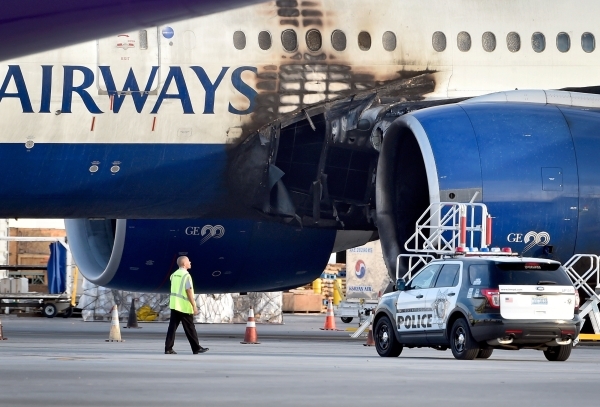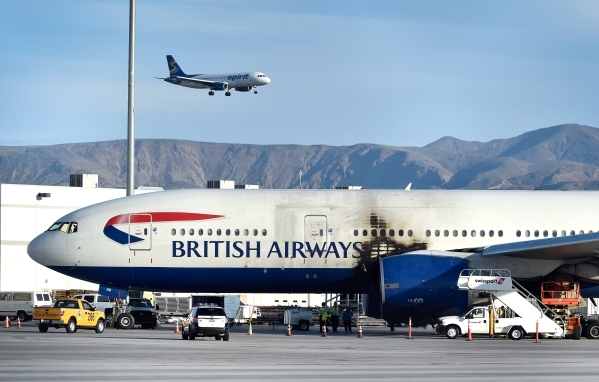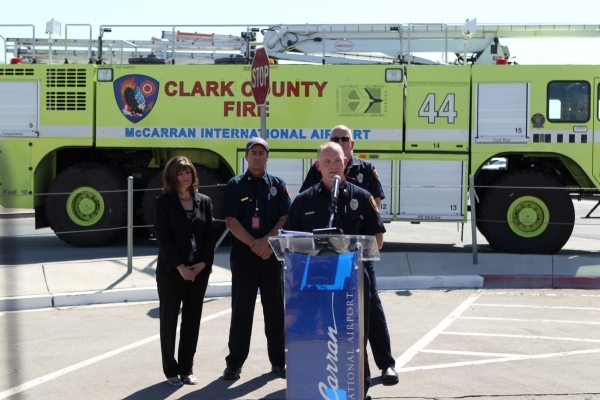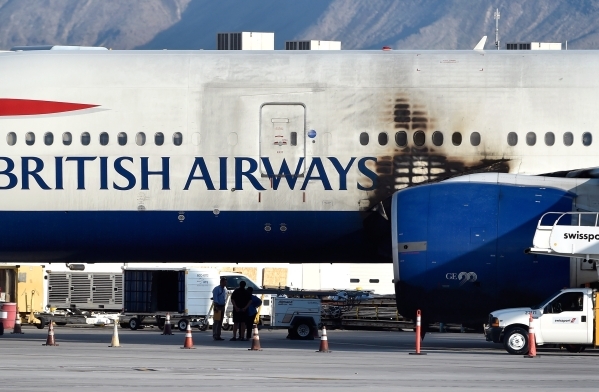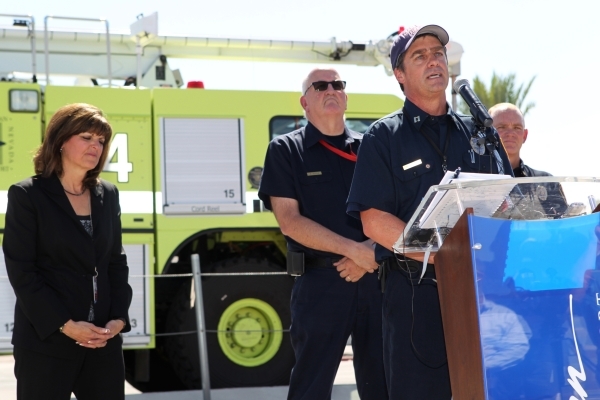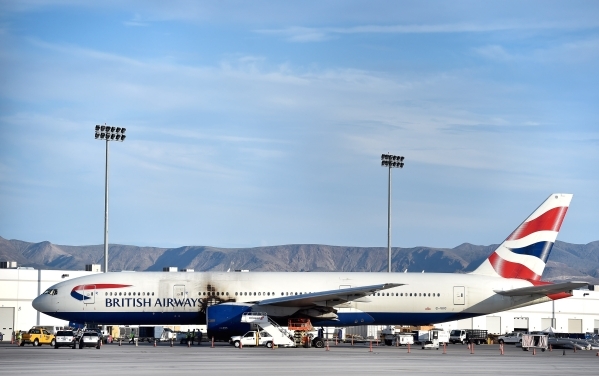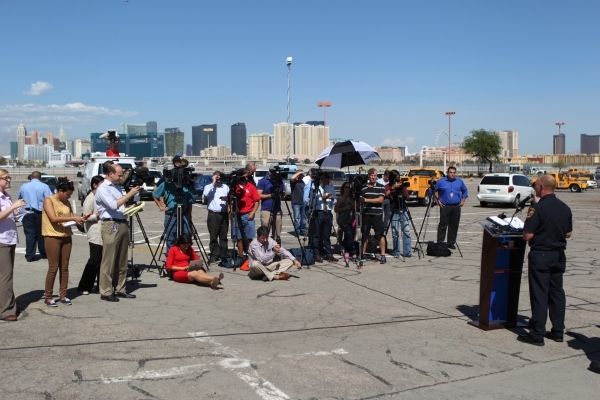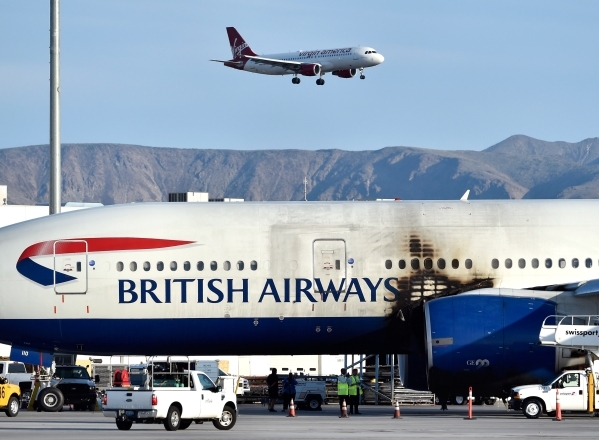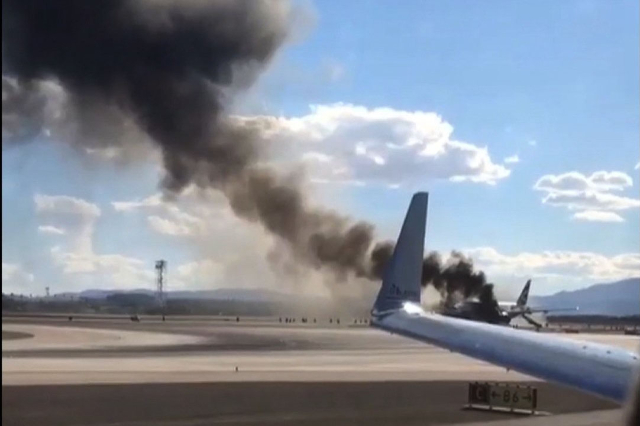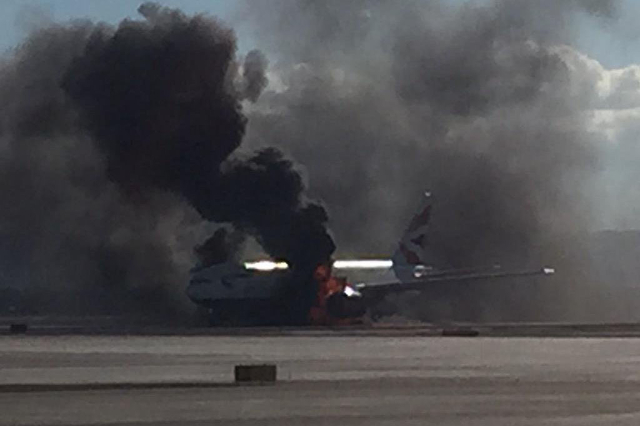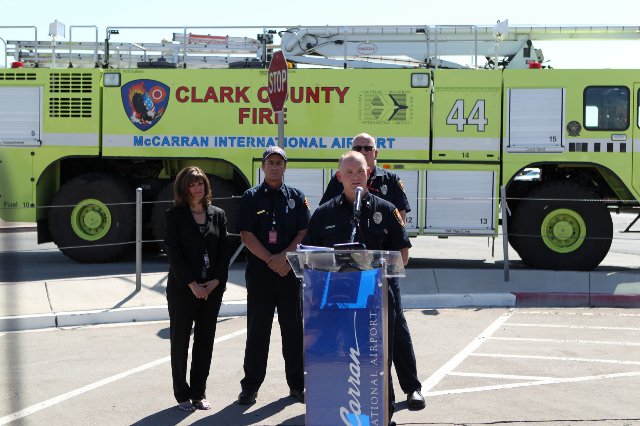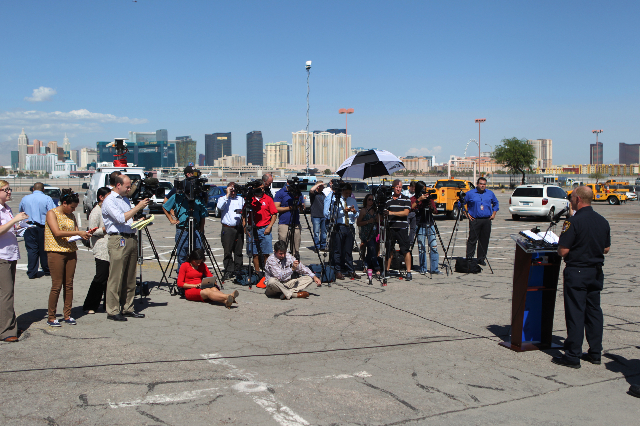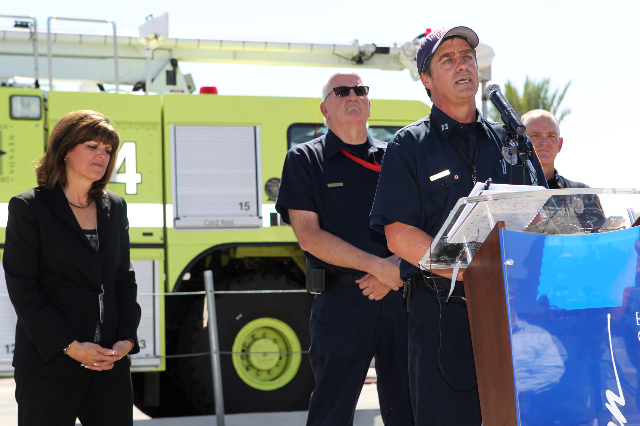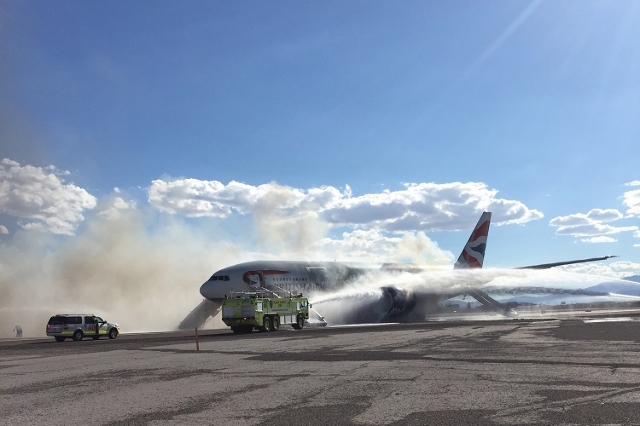Passengers frustrated with British Airways response to Las Vegas fire
Clark County officials on Wednesday touted crews' swift response to a fire on a British Airways plane at McCarran International Airport, but some passengers recall a slower reaction to the blaze from the carrier's employees.
Las Vegas couple Stuart Sheinman and Sally Dewhurst said they had to demand crews open the cabin door of the Boeing 777-200 Tuesday afternoon before they were eventually let off the burning aircraft. Smoke was visible from their 13th-row seats, they said, prompting their push to expedite the emergency exit.
At one point, a pilot stepped out of the cockpit to warn passengers to return to their seats, Sheinman said. Then when the pilot saw flames, he instructed the crew to "get these people off the plane."
"It felt like forever," Sheinman said about the wait. Once the slides ejected, Sheinman said, his wife was the first to escape.
When asked to address the complaints, British Airways representative Noel Meehan wrote in an email that "the well-being of our customers is our top priority," noting that the airline is trying to find new flights for stranded passengers.
London-bound flight 2276 was scheduled to depart at 4:05 p.m. Tuesday.
"We have been supporting government authorities while awaiting access to the aircraft," Meehan said.
'The trauma hasn't set in'
The engine fire — the biggest ever reported at McCarran — was spotted about 4 p.m. Tuesday as the plane accelerated for take off, speeding at more than 100 mph down a runway.
Crews then stopped the plane and unraveled its emergency chutes, allowing 157 passengers and 13 crew members to slide to safety within about 10 minutes.
One of the pilots is heard radioing for help in an audio clip posted online.
"Mayday, Mayday, Speedbird 2276 request fire services. We are evacuating on the runway, we have a fire, I repeat, we are evacuating."
As occupants escaped, more than 50 Clark County firefighters rushed to the site, dousing the fire at 4:18 p.m. before it spread past the plane's engine.
First responders took 27 people to Las Vegas Valley hospitals for minor injuries they got from sliding down the chutes, Clark County Fire Department Chief Greg Cassell said Wednesday. A few people complained about smoke inhalation.
The plane, meanwhile, was towed to a parking location in the airfield, where the affected runway was inoperable until shortly before midnight, according to Rosemary Vassiliadis, director of Clark County's Department of Aviation.
At a press conference Wednesday morning, government officials commended the swift actions of Clark County's airport-based fire crew and British Airways' response to the blaze.
But even though they're safe, Sheinman and Dewhurst said they're frustrated with the airline, whose employees have said it could be weeks before they can recover their luggage. The couple was headed to Britain on business.
"The trauma hasn't set in," Sheinman said. "Three seconds later, we would've left the ground and crashed in Henderson."
Four investigators with the National Transportation Safety Board were descending on the site of the fire Wednesday to assess its cause and the damage to the plane, agency spokesman Eric Weiss said. The NTSB crew, which includes dedicated engine and fire specialists, could spend up to a year trying to determine what sparked the flames, Weiss said, noting that "we're confident we'll be able to find out what happened."
Preliminary information from the Federal Aviation Administration's Pacific Division said the plane's left engine had burst into flames on takeoff.
General Electric said the plane was powered by two of its GE90 engines, which have had an "outstanding" safety and reliability record since entering service in 1995.
"Based on the engine fleet's service history, we are not aware of any operational issues that would hazard the continued safe flight of aircraft powered by these engines," the company said.
General Electric said it would join British Airways and Boeing in providing assistance to the NTSB in investigating what went wrong.
Earlier incidents
Experts said no other incident at McCarran has injured as many people as Tuesday's fire.
The most recent event before Tuesday happened Sept. 21, 2006, when a small private jet rolled through a fence and poked its nose several feet into Tropicana Avenue, said Mark Hall-Patton, who runs the Howard W. Cannon Aviation Museum at McCarran. The lurching aircraft, which was empty at the time, caused a minor wreck on Tropicana.
And on March 8, 1972, a bomb exploded behind the cockpit of an empty Boeing 707 at McCarran after someone called in a threat demanding $2 million from now-defunct Trans World Airlines.
No one was hurt in either incident.
In the early 1960s, Las Vegas-based Bonanza Airlines reported two wrecks at McCarran within a two-year span. The first occurred Feb. 12, 1964, when Bonanza Air Lines Flight 416 overshot the runway and caused minor damage to the aircraft but no injuries to the passengers and crew.
About a year later, another Bonanza aircraft crashed on takeoff during a training flight, destroying the twin-engine plane and injuring the pilot and a federal aviation inspector on board.
On average, fire crews respond to about 68 minor events per month at McCarran. They can involve anything from broken engine lights to small fires.
"We've had numerous incidents over the years," Cassell said, "but this is the first one of this magnitude."
Reporter Henry Brean and Reuters contributed. Contact Ana Ley at aley@reviewjournal.com or 702-224-5512. Find her on Twitter @la__ley. Contact Kimberly De La Cruz at kdelacruz@reviewjournal.com or 702-383-0381. Find her on Twitter: @KimberlyinLV.



